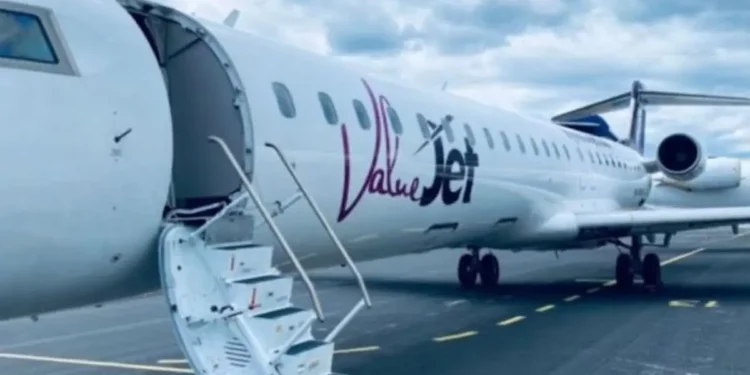Southwest Airlines Flight from Burbank Drops 475 Feet Mid-Air to Avoid Collision

Passengers on board a Southwest Airlines flight departing from Hollywood Burbank Airport faced a terrifying experience Friday when their plane abruptly dropped nearly 500 feet in what was later confirmed to be an emergency maneuver to avoid a mid-air collision.
Southwest Flight 1496 was en route to Las Vegas and had only been airborne for about six minutes when it suddenly descended 475 feet, from an altitude of 14,100 feet down to 13,625 feet. The drop was tracked and confirmed by flight monitoring service FlightRadar24.
Eyewitnesses on the flight described the moment as a harrowing experience. Some passengers believed they were experiencing a free fall and feared for their lives. One viewer from Woodland Hills who was aboard the plane reached out to local media immediately upon landing safely in Las Vegas. He reported that the pilot announced over the intercom that a collision avoidance alert had been triggered, prompting the sudden descent.
According to flight data, the other aircraft involved was a Hawker Hunter jet with the tail number N335AX. At the time of the near encounter, the Hawker Hunter was flying at approximately 14,653 feet. While the two planes never came dangerously close in actual proximity, remaining about 4.86 miles apart horizontally—the altitude difference and alert systems indicated a potential conflict, which activated the aircrafts’ automatic avoidance procedures.
Aviation safety systems such as the Traffic Collision Avoidance System (TCAS) are designed to prevent mid-air crashes. When two planes are on converging paths, the system issues real-time instructions for one aircraft to climb and the other to descend. This was the case during the incident on Friday, as the Southwest pilot responded instantly to the system’s warning.
Passenger Steve Ulasewicz described the drop as sudden and intense. Speaking to ABC News, he said it felt like a “significant drop” and compared it to a free fall lasting about eight to ten seconds. According to Ulasewicz, the pilot later confirmed that the maneuver had been carried out to prevent a potential mid-air collision.
“Everybody in the plane started screaming,” he recounted. “I honestly thought that was it. I thought this was how I was going to go out.”
While no customer injuries were reported immediately, two Southwest flight attendants were hurt during the incident. The airline confirmed that both crew members are currently receiving medical attention.
Southwest Airlines issued a statement expressing gratitude for the professionalism of the flight crew and cabin staff, and acknowledged that the airline is working closely with federal authorities to investigate the situation further.
“Southwest is engaged with the Federal Aviation Administration to fully understand the circumstances surrounding Flight 1496,” the airline said in the statement. “The safety of our customers and employees is our highest priority. We commend our pilots and flight attendants for their swift and professional response during this unexpected event.”
The FAA has not yet released an official statement or final report on the incident, but preliminary data suggests that while the two planes never came dangerously close, the automatic systems engaged appropriately as a precaution.
Aviation experts have pointed out that while such incidents are rare, they serve as a critical reminder of the importance of flight safety systems and constant communication between air traffic control and pilots. Near-miss events like this are often thoroughly reviewed to prevent future occurrences and to identify whether procedural updates or improvements in monitoring systems are necessary.
Hollywood Burbank Airport, from where the flight originated, remains one of the busiest regional airports in California. It handles hundreds of flights daily, and while it has maintained a strong safety record, the congested airspace over Southern California can occasionally lead to scenarios where split-second decisions must be made by pilots and air traffic controllers alike.
Passengers aboard Flight 1496 eventually reached Las Vegas without further incident. However, many described feeling shaken by the ordeal, with some saying it was the most frightening experience of their lives. The aircraft landed safely, and all passengers were allowed to disembark normally.
For many travelers, the event has sparked fresh conversations around flight safety and the importance of understanding how modern aircraft are equipped to handle emergency situations in the air. While unnerving, aviation analysts say the incident demonstrates the effectiveness of onboard safety systems designed to prevent tragedy.
Airline passengers are encouraged to always follow crew instructions and remain seated with seatbelts fastened during flight, especially during takeoff and ascent, when unexpected maneuvers are most likely to occur.
As investigations continue, both Southwest Airlines and the FAA are expected to release further findings and recommendations in the coming weeks. Until then, the aviation community will likely study this case closely as an example of technology and human training working in tandem to avert potential disaster.





Responses